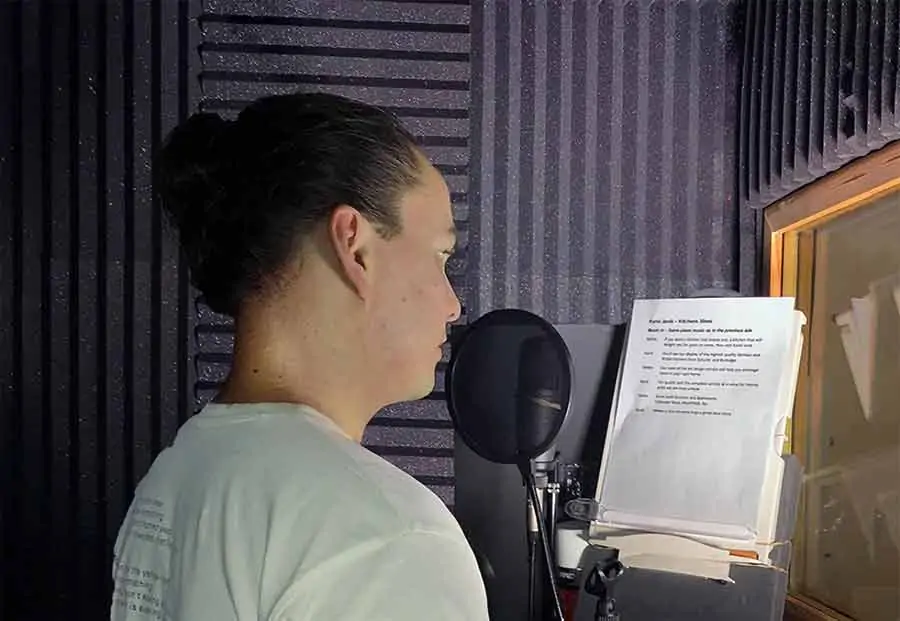Author: Tosh Lubek Published: 5th September 2018
DIY Video Studio is supported by its readers who use the affiliate links or ads on this site. As an Amazon Associate, I earn from qualifying purchases. Thank your support if you use any of the links.
Modern video cameras can cope with low light levels and they can even stabilize shaky footage, but they can’t fix room echo. That’s something you need to fix yourself. Fortunately, it can be done easily and relatively cheaply. This is what to do:
- Cover the floor, ceiling, walls, windows, & door with sound absorbers.
- Add furniture into the room space to disrupt the flat wall surfaces.
- Include soft furnishings and house plants to absorb sound
- Cover flat table tops and surfaces with a sound-absorbing material.
- Include acoustic room dividers.
If you need to know how to reduce room echoes cheaply, I’ll share my experience of what works, so read on.
How to reduce echoes in a room
When sound waves strike a surface, they may be reflected, pass through, or be absorbed.
Room echo, or reverberation, is caused by sound being reflected and bouncing to and fro between hard reflective surfaces, such as walls, plus the floor and ceiling.
To improve the acoustics of a room we want to absorb or disrupt the reflected sound waves. So, to reduce room echoes and reverb you can do one or all of the following:
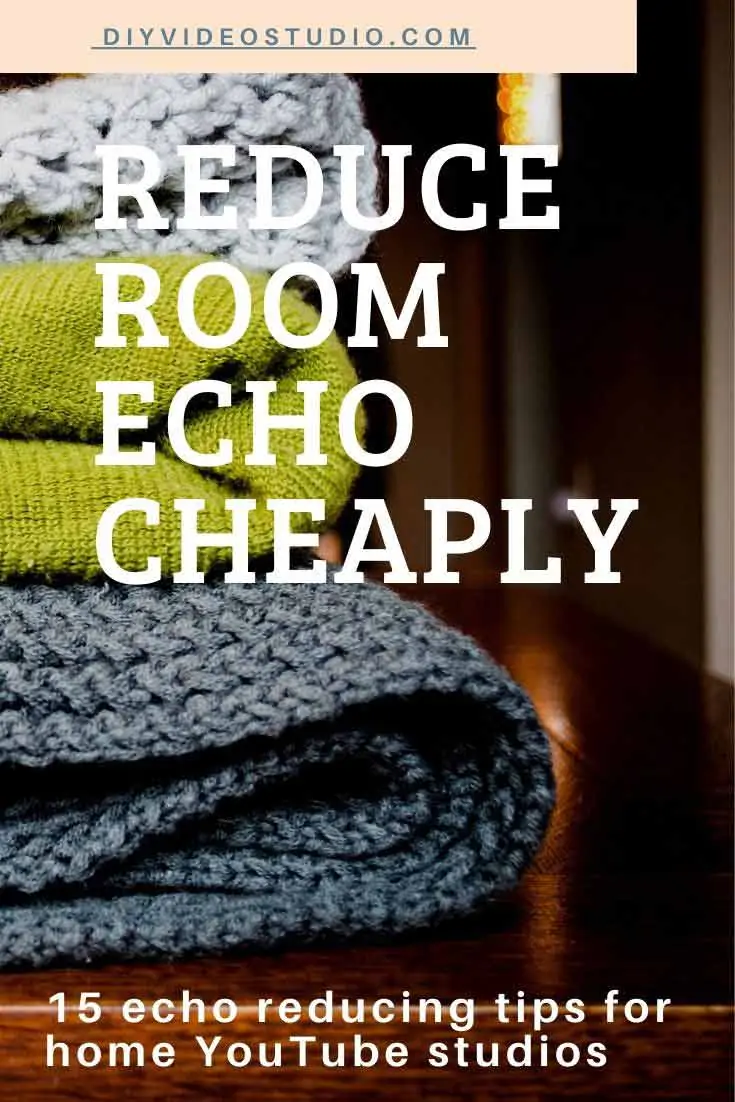
- Remove hard flat sound-reflecting surfaces
- Turn surfaces into sound absorbers
- Make flat surfaces uneven so they disperse sound
Hard surfaces in your room may include concrete, stone, brick, ceramic tiles, glass, metal, and drywall. Flat furniture, such as tabletops, can also contribute to the problem. Some surfaces obviously can’t be removed, but you can cover or make them uneven.
I’ll go through the options one-by-one.
How to reduce echoes in a room by covering the floor
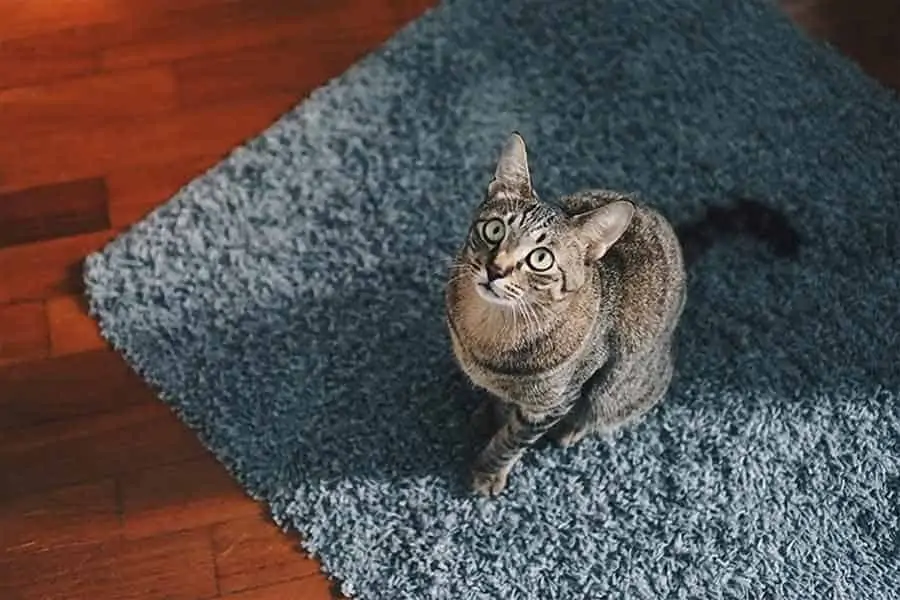
Floor materials are varied, but they all have one thing in common, they are flat and hard. Not only does this encourage echoes but they also make your footsteps noticeable. I know ceramic tile, wood, and laminate flooring are popular right now, but they’re also hard and reflective, which can cause echoes.
Carpets: Consider laying carpets, especially ones with a deep pile. If you decide to carpet your room, also use good quality carpet padding or underlay. Padding can increase the sound absorption of your carpet. Tests by Kodaras Acoustical Laboratories, reported in the Journal of the Acoustical Society of America, show carpets alone can have a noise reduction coefficient (NCR) as low as 0.25 but carpets plus padding can result in an NRC as high as 0.7.
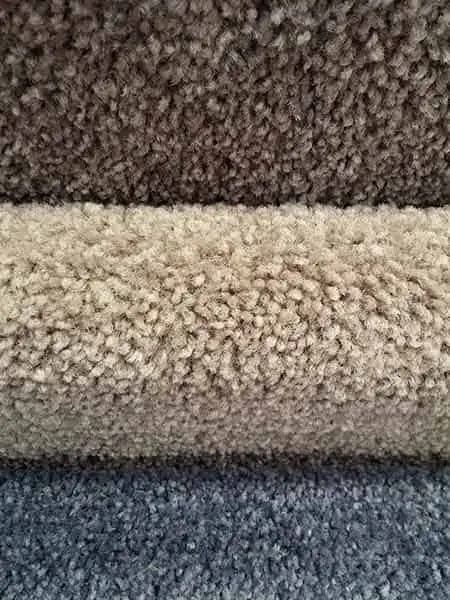
Area rugs: If carpeting isn’t an option, consider putting down a rug.
Even a few area rugs scattered about the room can make a difference. Again, a deep pile would be good but rugs like the one opposite from Amazon would also do the job.
Reducing echo in a room cheaply by covering walls
The flat surfaces you will have the most of in a room will be the walls. Typically, these will be made of drywall, known as plasterboard in the UK. Although drywall is not as reflective as ceramic tiles or wooden paneling, it will still reflect sound. So, what can you do?
Hessian/Burlap: If you are looking for a permanent fix you could copy what recording and radio studios do. They use hessian (burlap in the US) wall covering. It helps to absorb sound, but it also breaks up the flat wall surface. You will probably also need some other sound-absorbing material beneath the hessian.
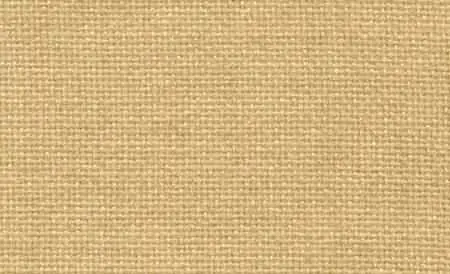
Wall hangings: Tapestries, fabric wall hangings, and decorative wall rugs not only look great, but they also help to kill excessive reverberation in a room. It can also help if you hang them from a pole rather than directly against the wall. That way you are also putting in a “step” in the otherwise flat wall. Using thick tapestries helps because their extra mass helps to absorb sound. Also, leaving a small air gap between the wall and the wall hanging can also improve sound absorption.
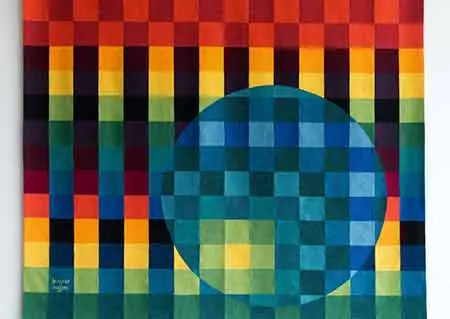
Blankets: This is a cheap and easy method to remove room echo. I’ve tried a few methods of hanging old blankets but the one that worked best was to pin the blankets to the walls with long thumbtacks. When I tried this method in my garage the transformation in the acoustic was remarkable. The garage went from having lots of echo to a very usable video recording space.
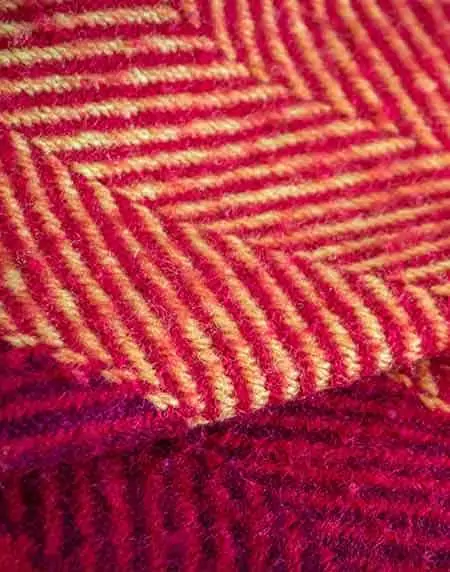
The old “hairy” woolen type of blankets can be picked up quite cheaply in many charity shops. A single layer attached to a concrete block wall, or drywall, will be quite effective.
Hanging blankets don’t look pretty, but you won’t be pointing your camera at them. If you can’t find cheap old blankets, try packing or moving blankets. You can get them here from Amazon.
Muslin backdrop: I have recorded countless videos with a plain wall as a backdrop. But I’ve also found using a muslin or cotton backdrop cloth not only improves the look of the background but also introduces an extra way of reducing reverberation in a room. The soft muslin cloth helps to prevent sound reflections but also helps with diffusion by introducing a step in the flat wall surface.
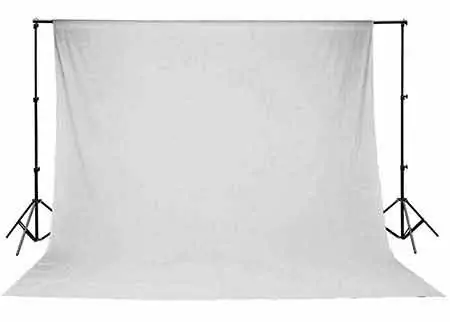
Acoustic panels: Acoustic panels are passive sound capture devices about 2 to 4 inches deep that hang on the wall. Although they are most frequently rectangular, they are available in several other shapes. The rectangular types are commonly available in 1x3ft and 2x4ft sizes.
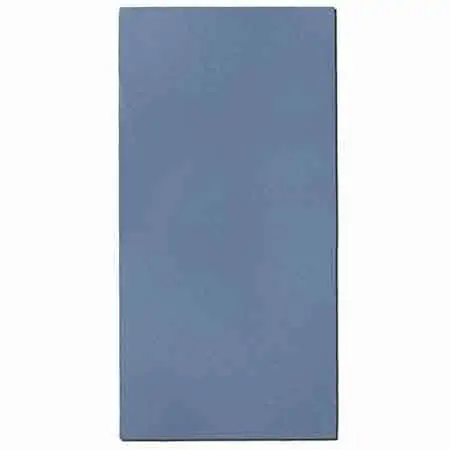
Acoustic panels have a wooden frame filled with acoustic fiberglass; the whole is then covered with acoustic fabric. The idea is that sound enters but little is reflected out.
Pro Tip: Professional acoustic panels are given a noise reduction coefficient (NRC) rating. A zero rating means no sound is absorbed. A rating of 1 means 100% of the sound is absorbed. Look for a panel with an NRC rating of 0.6 or higher.
You can make your own acoustic panels. Make a timber frame with plywood back. Fill the space with acoustic mineral wool (Rockwool) or fiberglass. Then cover with good acoustic fabric, like Guilford of Maine Sona Acoustical Fabric, which is available here
on Amazon. Natural burlap with a lower thread also works well.
Mike DelGaudio, the Booth Junkie, has recorded an excellent video showing how to make DIY acoustic panels.
Acoustic foam tiles: Acoustic foam tiles are light, cheap, and available in several colors. The two most common profiles are the wedge and the egg crate. I prefer wedge foam tiles since they seem to have a higher NRC rating.
You will frequently find the tiles as 12 x 12-inch squares with a depth of 1, 1.5, 2, or 2.5 inches.
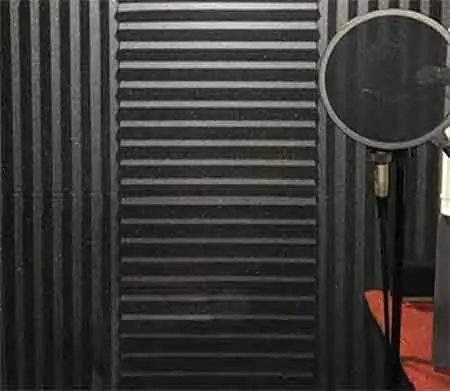
I have used the 1.5 inch deep tiles in my voice booth, which are available from Amazon. and the 2 inch deep tiles
on my studio walls, also available from Amazon.
Installation is relatively easy. Use a contact adhesive if it is a permanent installation, otherwise use T-pins or Command strips.
After installing acoustic foam tiles in my home studio space and voice booth I noticed a significant difference in the room acoustic.
How to reduce echoes in a room from doors and windows
Wooden doors, window glass, and bedroom mirrored wardrobe doors are all highly effective at reflecting sound and adding to the reverberation. Although you can buy permanent door and window sound barrier panels, ordinary room echoes shouldn’t require you to go to such an expense.
Windows: If you have curtains or drapes over your windows, simply close them. Of course, if you are shooting videos, you’ll need artificial lights. Curtains, especially the heavier type with linings, can be highly effective in your efforts to reduce echo in a room cheaply.
Although new curtains can be expensive, if you already have them installed then there is no extra cost in using them.
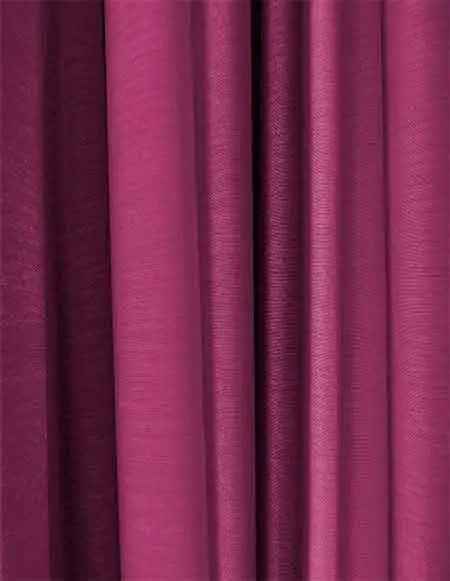
If you have large windows in your room the ideal solution would be to hang heavy velvet drapes. They are thick, usually lined, and have a surface texture that will help absorb sound. The irregular folds also produce rounded surfaces that will disperse sound waves, cutting reverberation in the room.
Doors: The problem with doors is easily solved by covering them with blankets or drapes.
You can hang them from a pole above the top of the door or “hook” the material over the top of the door and then shut the door. Closing the door should keep the blanket or drapes in place.
If you can leave a little airspace between the face of the door and the blanket that will be beneficial.
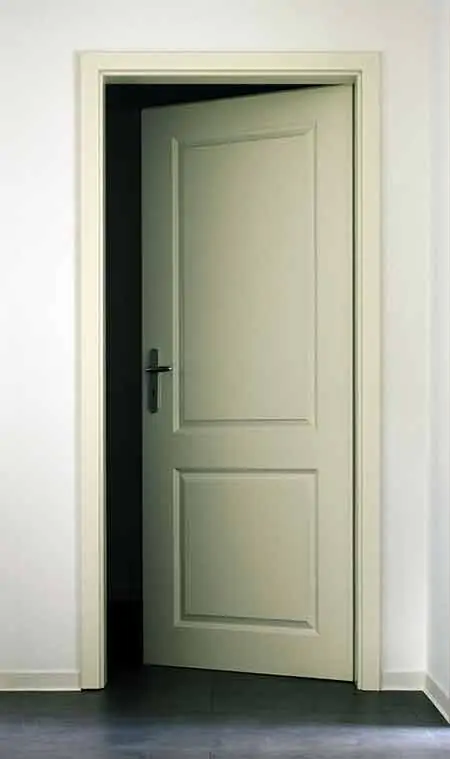
Another option with doors is to apply acoustic tiles to the door surface. However, this is only likely to apply if the room is a den or a similar space. In this situation, I would use Burton Acoustix Series 9 tiles from Amazon since the tiles also provide soundproofing and acoustic treatment benefits. They are also simple to install by using 3M VHB Tapes.
Mirror wardrobe doors: If your bedroom is your YouTube studio, mirrored wardrobe doors may pose a problem.
Again, hang blankets in front of the doors. If the wardrobe has sliding doors, open some up to minimize the mirror surface area.
The open parts of your wardrobe, especially if they have hanging clothes, will work as a sound baffle.
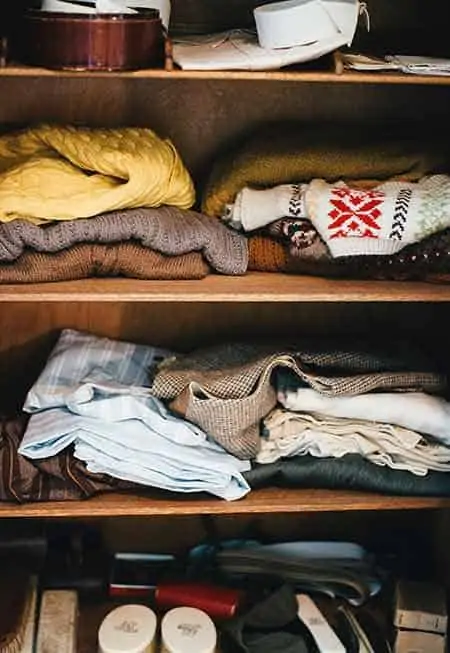
How to reduce echoes in a room caused by high ceilings
High ceilings can be a problem when it comes to room echo. The way to deal with them is to lower the ceiling height or install hanging baffles. To be fair, a drop ceiling and large professional baffles are probably going to be expensive solutions. However, you can create and hang DIY hanging baffles. Then hang them from joists etc. using light chains. Hang the panels vertically or horizontally and even vary their heights.
Acoustic Drop Ceiling Tiles: Other names for a drop ceiling include suspended ceiling, grid ceiling, drop-in ceiling, false ceiling, and T-bar ceiling, but they all do the same thing of lowering your ceiling and allowing the installation of ceiling tiles. As you can see in the image to the right.
An aluminum metal support (the T-bar) is installed, and the acoustical ceiling tiles drop into place at each opening.
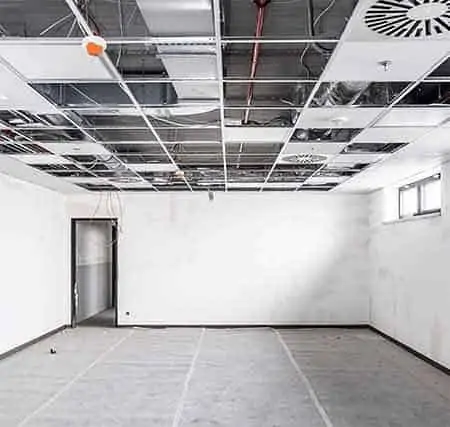
Installing the T-bar fitting is the most time-consuming part of the job, but fitting the actual tiles is quick.

The tiles vary in thickness from about 5/8″ to 2″. The thicker acoustic ceiling tiles often have a higher NRC rating and hence they will absorb more sound. For the maximum effect try sourcing acoustical ceiling tiles that have an NRC rating of 0.6 or higher.
Echo Absorber Hanging Baffles: These are professional solutions available from Soundproof Cow but you don’t have to fill all your ceiling space with baffles to absorb a lot of echoes. Each lightweight panel traps 65% of the sound that enters it. They are 2ft x 4 ft and come in two thicknesses, 1 and 2 inches.
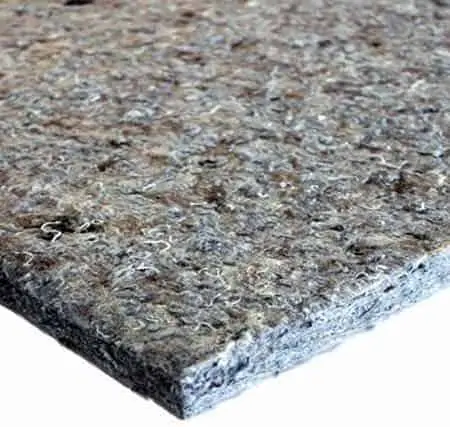
They are made from bonded recycled cotton fibers that are acoustically superior compared to fiberglass and cellular foam. They’re easy to install and handle, and since they don’t include fiberglass, they won’t cause skin irritation.
They are designed for use in Auditoriums, Band Practice Rooms, and Broadcast Studios. So, the baffles will be a perfect fit for a larger space with high ceilings.
Burton Acoustix Tiles: A suitable alternative to the Echo Absorber Hanging Baffles for a smaller domestic setting is the Burton Acoustix Series 9 soundproofing panel. They are made from a dense fiber material and come in packs of 5 and are 12×12″ in size.
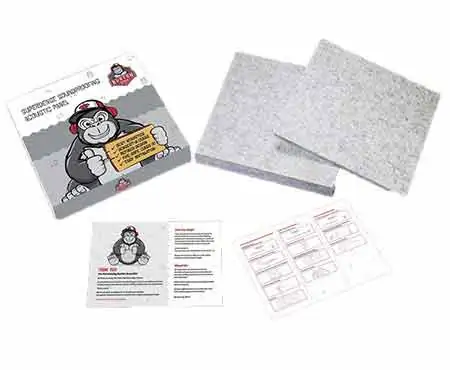
They are super dense acoustic panels that are many times denser than acoustic wedge cellular foam tiles. They have a density of 211kg per cubic meter compared to studio wedge foam with a density of only 25-40kg per cubic meter. The point is, that high-density panels are better at absorbing sound. These have an NRC rating of up to 0.85, so as well as being good for soundproofing, they are also good for acoustic treatment.
Use these Burton Acoustix tiles in either a T-bar ceiling system or punch holes in the corners and hang them from the ceiling on chains.
Reducing echo in a room cheaply by adding furniture and stuff
Absorbing sound helps to reduce room echo, but you can also scatter the sound waves before they become echoes. You can disrupt sound reflections by adding “stuff” into the room. Fortunately, you probably already have the stuff you need. That stuff is furniture, soft goods, and filled bookcases.
Bookcases & bookshelves: Bookcases also help in reducing echoes in a room. The books are soft and will absorb sound, but they will also scatter sound waves. Most books are not of identical size. This is an advantage when it comes to scattering sound. Mix up your books a little with tall books beside short ones.

Also, don’t have all the backs of the books at the same level. If some books are less deep than others, push them in towards the back of the bookcase or wall. By varying the depth of neighboring books, you are breaking up the flat surface. Think random and untidy and you will be good to go.
Shelves: Bookcases are effectively shelving with a specific use, so it’s no surprise that ordinary shelves can also help. Because they stick out from the wall surface they will act like baffles and help break up the path of sound waves.
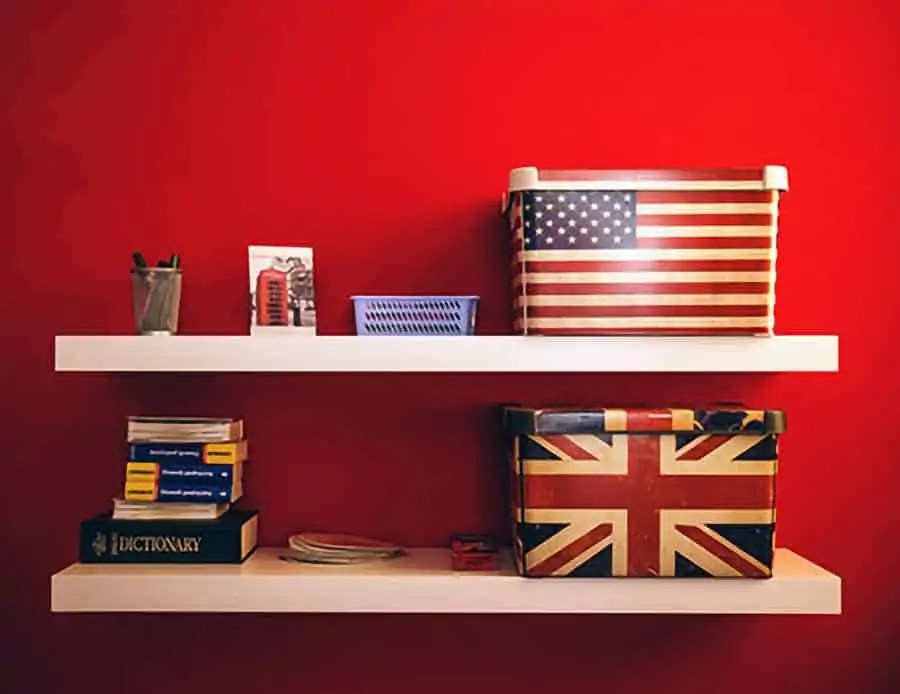
You can enhance the dispersive property of your shelves by using them for their true purpose and put some stuff on them. Ornaments, mugs, decorative pieces, etc. will all help to scatter sound waves, so partly fill your shelves. Don’t overdo it though. Avoid a “solid wall” of stuff on your shelves.
Couches: Upholstered couches, armchairs, and chairs can help reduce reverberation in a room. They work in two ways. First, the materials they are made of will absorb sound, like acoustic panels. Secondly, their shape and size help to disrupt sound reflections in the room. Couches upholstered in fabric are better at the job than the leather type since the leather tends to absorb less of the sound.
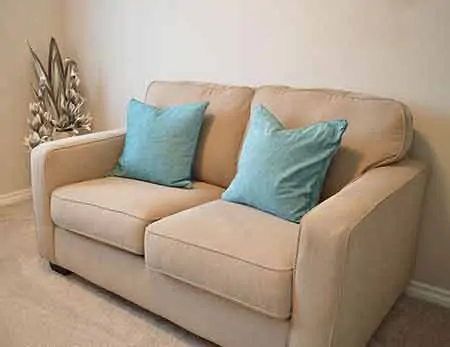
Obviously, don’t completely fill the room with furniture. You will need some room for your camera, tripod, lights, and talent!
Soft Goods: Things like cushions and throws all help to deaden sound in a room. However, because the material in cushions tends to be low density and the volume is small, they are not as effective at absorbing sound as acoustic panels. Even so, they do absorb some sound and will help break up space in the room.
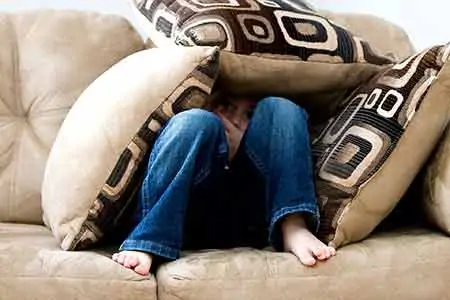
Coat tree or stand: These are probably more common in offices than in homes, but they can also be useful because they are easy to move around in a room.
Load them up with coats and hats, then place them in position in potential trouble spots. These can include in front of windows or the corners of a room. For maximum effect hang the clothes on coat hangers first and then hang them from the coat stand. This will maximize the surface area of the clothes’ absorbent cloth material.
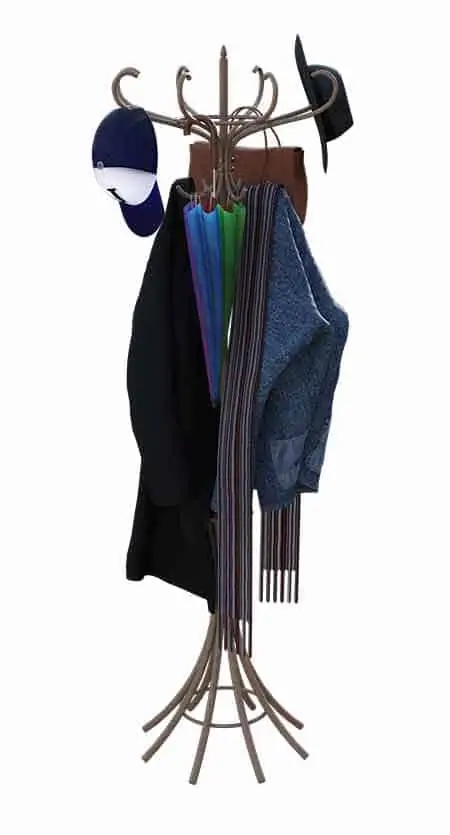
Clothes Horse: I use these a little like coat trees. But in this case, I will cover them in fluffy towels or blankets. Again, they can be moved to reflective trouble spots in the room.
Add House Plants: Do plants really absorb sound and reduce echoes? Surprise, surprise. Yes, they do! Add some sound-absorbing plants.
I know this one sounds wacky, but plants help reduce echoes and they liven up your spirits in any room. However, a single plant is probably going to be more useful for dressing your set than improving the acoustics.
Foliage provides irregular surfaces that can help scatter sound, thereby reducing reverberation.

For maximum sound absorption use plants with a large surface area of foliage. That doesn’t necessarily mean a few large leaves. Plants with a lot of leaves, all at random orientations, will be more effective at scattering sound. The total surface area will be large, and the random leaf orientation will scatter sound in all directions.
Place plants around the sides of your room or home video studio. Also, use them to decorate your set. But this natural acoustic treatment can take up a significant amount of your studio space compared to its usefulness.
Reduce echoes in a room by covering flat surfaces
Ignoring your floor, you’ll probably have some flat surfaces in your room, especially if you’ve included some furniture.
Add clothing: If you’re filming in a company board room or your dining room it will probably have a large wooden or glass-topped table. You can make the table less reflective by placing clothes, woolens, and blankets on top. They’ll absorb sound and if made to look attractive they can even be used to dress your set.
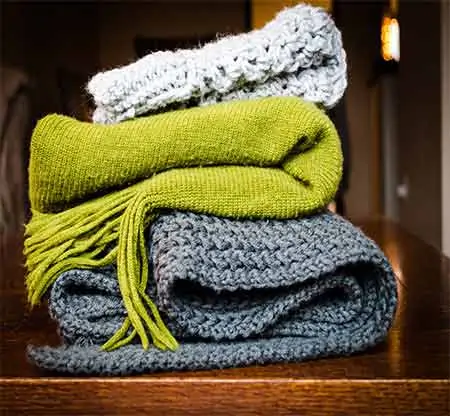
Tablecloths: This is a simple fix. Just cover flat furniture and tables with a heavy linen or cotton tablecloth. If you intend to sit at a table to present your videos, add a table pad or blanket under the tablecloth.
If you intend to present your video from behind a table or desk, you’ll create an acoustic table effectively.
The fabric surface reduces sound flections but will also deaden noises from placing your hands and other objects on the tabletop.
Reduce echoes in a room with room dividers
Tension Rod Room Divider Kit: These kits are good at breaking up reflected sound in a home video studio. Not only can they help deaden reverb in a room, but they can easily be table down and stored between shoots. If required, you could also these room dividers as a backdrop.
These kits are available from Amazon and the extendable tension bar will hold in place without the need for screws or other wall fixings. The kits are available for various room sizes, for instance, the XX-Large kit spans rooms 10ft to 12ft 6in.
Final thoughts
Before you expend a lot of effort and expense on reducing room echoes make sure you understand the cause. For instance, if your room has a small window, it probably isn’t going to be the main cause of the reverb.
Go after the most likely culprits first.
If you have a large room with no furniture in it, consider adding some furniture like upholstered chairs and a couch. However, if that’s just not possible or undesirable, consider what you can do next.
Remember, flat hard surfaces are the main causes of echo in a room. Consider which of those surfaces are causing the most negative effect on the room acoustic and go after them. But be prepared to implement more than one solution.
Finally, I have recorded a video about reducing the echo in a room that you may find helpful. If you do, please like, subscribe, and hit the notify bell.
Tosh Lubek runs an audio and video production business in the UK and has been using the Canon EOS R since it was released in the Autumn of 2018. He has used the camera to shoot TV commercials for Sky TV, promotional business videos, videos of events and functions, and YouTube creator content. He has also won international awards for his advertising and promotional work. You can meet him by visiting his “video booth” at HashTag business events across the country.
Tosh Lubek has run his audio and video production business since 2010. Prior to that, he worked in broadcast advertising for 30 years.
Recent Posts
Recently, I shot several customer testimonial videos in 4K for a client when the overheating warning on my Canon EOS R6 appeared. In fact, it appeared three times in five sessions during the day of...
Why Every Photographer Should Have a Nifty-Fifty 50mm f/1.8 Lens
If there’s one lens nearly every photographer should own, it’s the 50mm f/1.8 - better known as the “nifty fifty.” This affordable lens provides impressive quality and versatility, making it...


